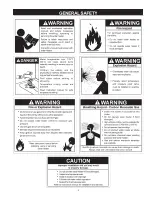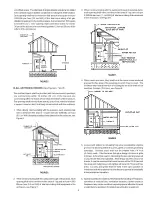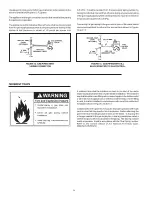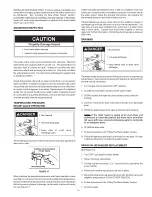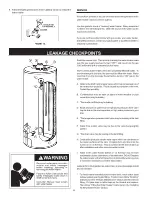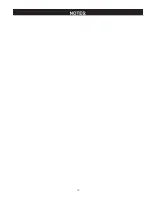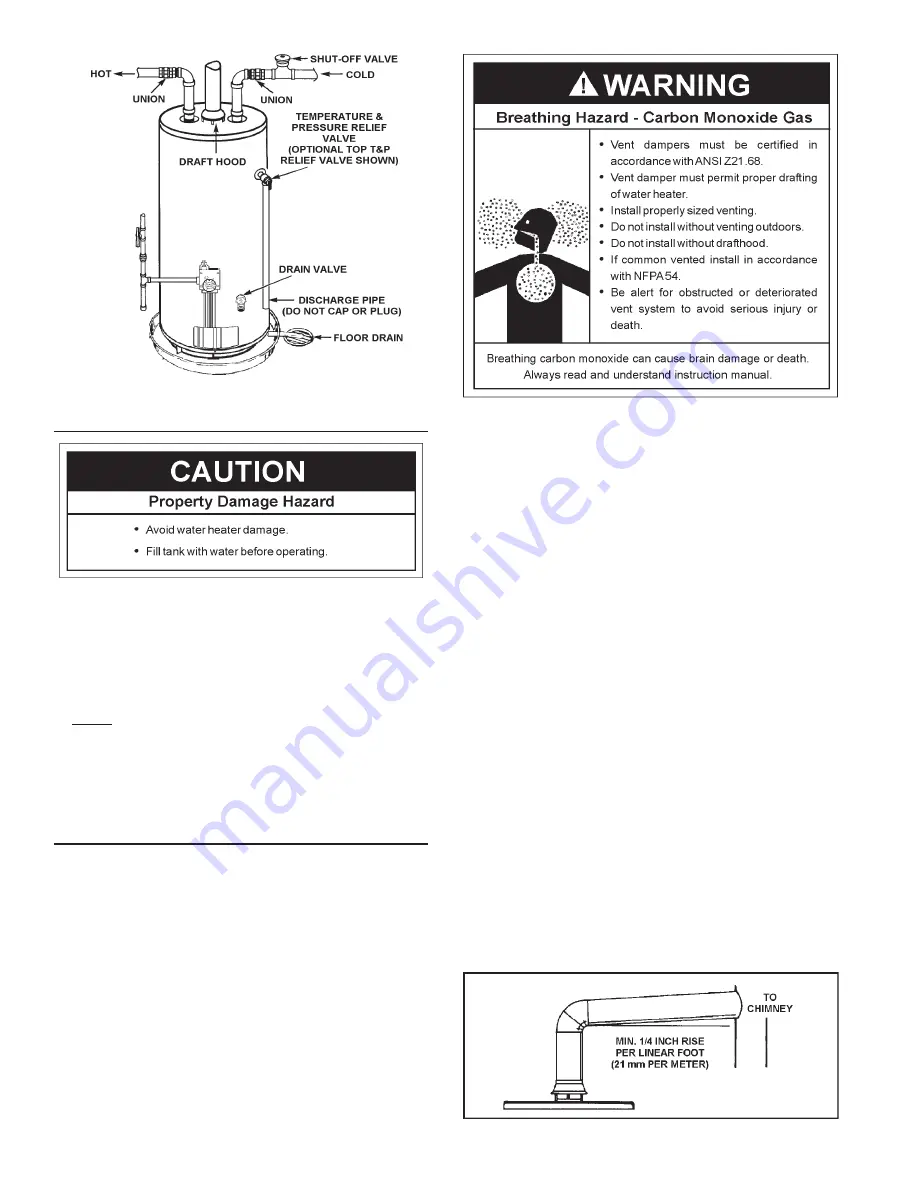
12
FIGURE 10.
FILLING THE WATER HEATER
Never use this water heater unless it is completely full of water. To prevent
damage to the tank, the tank must be filled with water. Water must flow
from the hot water faucet before turning “ON” gas to the water heater.
To fill the water heater with water:
1. Close the water heater drain valve by turning the handle to the right
(clockwise). The drain valve is on the lower front of the water heater.
2. Open the cold water supply valve to the water heater.
NOTE: The cold water supply valve must be left open when
the water heater is in use.
3. To insure complete filling of the tank, allow air to exit by opening the
nearest hot water faucet. Allow water to run until a constant flow
is obtained. This will let air out of the water heater and the piping.
4. Check all water piping and connections for leaks. Repair as needed.
VENTING
VENT DAMPERS - Any vent damper, whether it is operated thermally or
otherwise must be removed if its use inhibits proper drafting of the
water heater.
Thermally Operated Vent Dampers: Gas-fired water heaters having
thermal efficiency in excess of 80% may produce a relatively low flue
gas temperature. Such temperatures may not be high enough to
properly open thermally operated vent dampers. This would cause
spillage of the flue gases and may cause carbon monoxide poisoning.
Vent dampers must bear evidence of certification as complying with
the current edition of the American National Standard ANSI Z21.68
(ANSI Z21.66 & 67, respectively, cover electrically and mechanically
actuated vent dampers). Before installation of any vent damper, consult
the local gas utility for further information.
For replacement heater installations where using pre-existing venting,
venting must be inspected for obstructions and if deterioration is present
venting must be replaced.
To insure proper venting of this gas-fired water heater, the correct
vent pipe diameter must be utilized. Any additions or deletions of other
gas appliances on a common vent with this water heater may adversely
affect the operation of the water heater. Consult your gas supplier if
any such changes are planned.
For proper venting in certain installations, a larger diameter vent pipe
may be necessary. Consult your gas supplier to aid you in determining
the proper venting for your water heater from the vent tables in the
current edition of the National Fuel Gas Code ANSI Z223.1/NFPA 54.
Periodically check the venting system for signs of obstruction or
deterioration and replace if needed.
The combustion and ventilation air flow must not be obstructed.
The water heater with draft hood installed must be connected to a
chimney or listed vent pipe system, which terminates to the outdoors.
Never operate the water heater unless it is vented to the outdoors and
has adequate air supply to avoid risks of improper operation, explosion
or asphyxiation.
For proper drafthood attachment, the drafthood legs may be angled
slightly inward.
Obstructed or deteriorated vent systems may present serious health
risk or asphyxiation.
The vent pipe from the water heater must be no less than the diameter
of the draft hood outlet on the water heater and must slope upward at
least 1/4 inch per linear foot (21 mm per meter), see Figure 11.
All vent gases must be completely vented to the outdoors of the
structure (dwelling). Install only the draft hood provided with the new
water heater and no other draft hood.
Vent pipes must be secured at each joint with sheet metal screws.
FIGURE 11.



